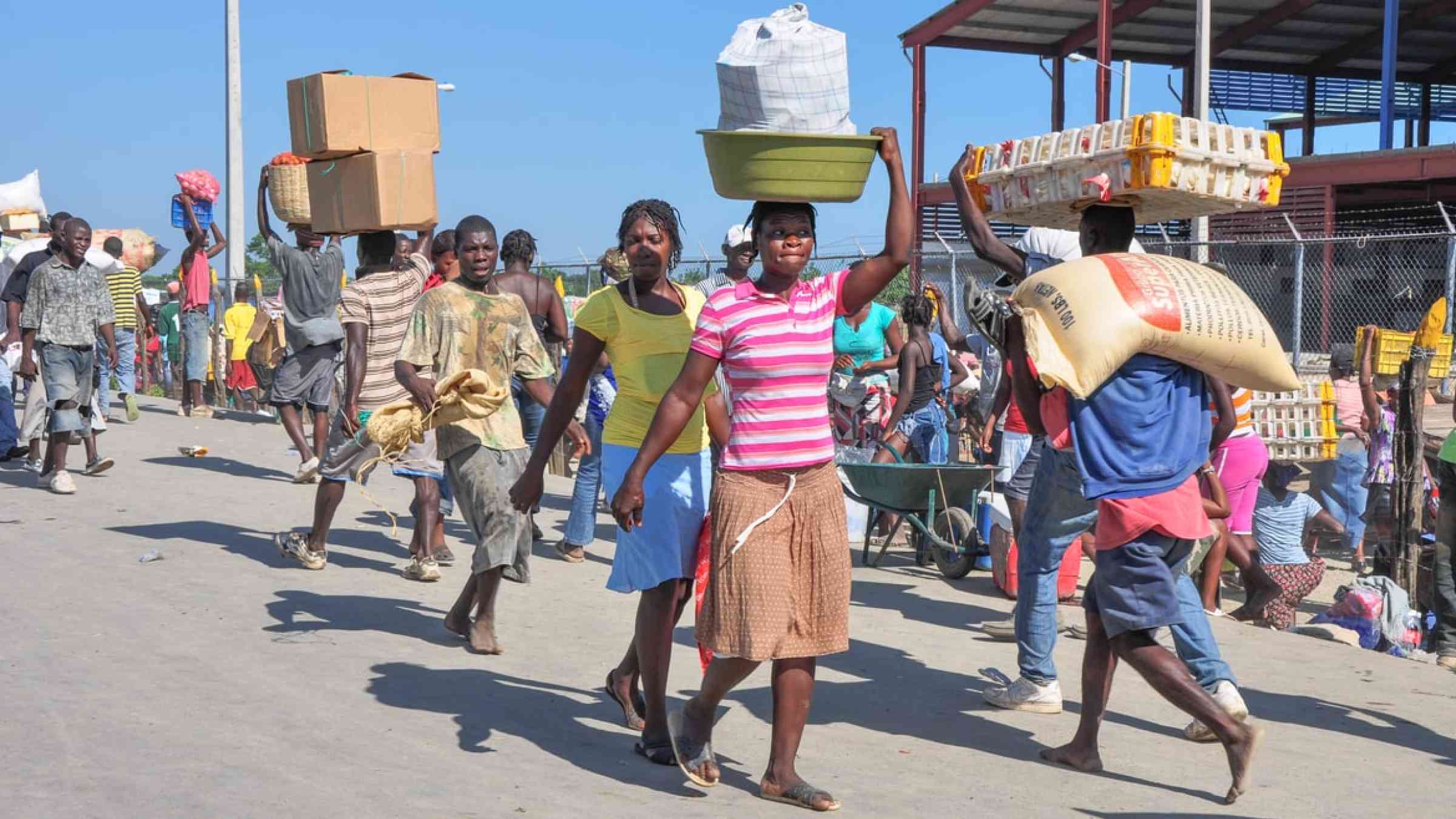Haiti’s path to building financial resilience against disasters

Building resilience to natural hazards, such as hurricanes, flooding, and earthquakes, is never easy, especially for a country like Haiti, which is highly vulnerable to these threats. High levels of poverty, weak infrastructure, an unstable political landscape, rapid and unregulated urbanization, and fragile government agencies—including those responding to disaster risks—raise the hurdle even more, amid a pandemic that every country is struggling to contain. With climate change playing an increasing role in all these hazards, the latest data from insurer Munich Re shows that losses from natural catastrophes in 2020 rose to $210 billion globally, from $166 billion in 2019.
Despite the determination of the Haitian people to build back better after every disaster, including the tragic 2010 earthquake and Hurricane Matthew in 2016, the country was yet again hit by a massive 7.2 magnitude earthquake on August 14, 2021. According to authorities, more than 2,200 people died and up to 130,000 homes were destroyed or damaged in southern Haiti. Then only a few days later, Tropical Depression Grace dumped extremely heavy rains in the same southwestern peninsula, still reeling from the impact of the earthquake, delaying urgent humanitarian assistance and damage assessments.
In addition to the loss of lives, disasters are costly for citizens and the country. The immediate spending needed for response and reconstruction is compounded by a weakened economy, damaged infrastructure, destroyed businesses, reduced tax revenues and a rise in poverty levels. These costs are particularly difficult to bear for low- and lower-middle-income countries that tend to depend on ad-hoc solutions, such as emergency loans or diversion of other limited financial resources. The lack of financial-resilience mechanisms for disasters often delays economic recovery and prolongs hardships for governments, households, businesses, and vulnerable communities.
Financial preparedness, a key for resilience
In light of the past, present, and future threats, Haiti had multiple risk-financing instruments in place, supported by the World Bank and partners such as the European Union. The Caribbean nation has benefited from funding innovations in disaster-risk financing. Within 14 days of the earthquake, the government of Haiti received a payout of approximately $40 million from the Caribbean Catastrophe Risk Insurance Facility Segregated Portfolio Company (CCRIF SPC), its single largest payout to date.
CCRIF SPC was established in 2007 as the first multi-country risk pool in the world with technical support from Japan. CCRIF SPC is capitalized by the premiums paid by its member countries and funds from various donors, such as Canada, the EU, Germany, Ireland, and Mexico, allowing it to sustainably provide disaster-risk financing in the form of insurance to Central American and Caribbean countries.
The 2021 claim is Haiti’s fifth policy payout, bringing the total amount received to $78.2 million. It was made possible by the progressive increase in Haiti’s parametric insurance coverage for earthquakes.
The subscription to CCRIF SPC is also a reflection of a shift away from a focus on reactive post-disaster response to a more proactive approach focusing on prevention and preparedness, and the success of global partnerships. Some countries also received donor contributions towards the insurance premiums paid to CCRIF SPC. Haiti, for example, has benefited from a special premium discount of 26 percent in response to the pandemic, supported by the EU’s Caribbean Regional Resilience Building Facility, which is managed by the World Bank’s Global Facility for Disaster Reduction and Recovery (GFDRR). This discount is complemented by ongoing premium support provided to Haiti by the Caribbean Development Bank.
Next steps in planning ahead
Haiti has other mechanisms in place, such as the World Bank’s Contingency Emergency Response Component (CERC), which allows funds to be reallocated from existing projects to address emergency response needs. For instance, the CERC of Haiti Rural Accessibility & Resilience Project, for $30 million, has been triggered to restore road connectivity following the recent eartquake. The Bank is also working with the Government of Haiti and other development partners on a comprehensive needs-assessment and recovery plan. This will be used to mobilize funding from the World Bank and partners for a resilient and inclusive recovery and reconstruction in Haiti.
Strategic disaster-risk financing (DRF) is a critical component in strengthening the resilience of countries like Haiti and protecting poor and vulnerable communities from the financial and economic impacts of disasters. Haiti has relied on various sources of post-disaster funding in the past, but none of them as predictable and streamlined as the CCRIF SPC payouts. International humanitarian aid, which has played an outsized role up to now, is particularly difficult to anticipate in timing and amounts. A good strategy for DRF will increase predictability and reduce budgetary uncertainty, while improving governance and efficiency. By planning ahead, countries can, for example, invest in shock-responsive safety net mechanisms, registries of beneficiaries, aid logistics, and pre-established national disaster funds, which all facilitate rapid assistance to the at-risk population in a reliable, predictable, and efficient way.
Haiti is currently developing a comprehensive DRF strategy, in partnership with the EU’s Caribbean Regional Resilience Building Facility, which will likely include instruments such as CCRIF SPC coverage, contingent credit lines, emergency funds, and coordinated budget reallocations. Once the plan is in place, then the challenge will be the execution.
Ideally, it is during blue-sky times, well before a disaster throws a country into emergency mode, that risks, exposures, and vulnerabilities should be identified and quantified. Priorities should be determined; rules, roles and responsibilities established; and mechanisms for funding and delivery put in place in advance, all guided by a carefully crafted strategy. The World Bank, along with its partners, will continue to work with the government, for the people of Haiti, to strengthen its financial resilience and ability to protect the most vulnerable from disasters.